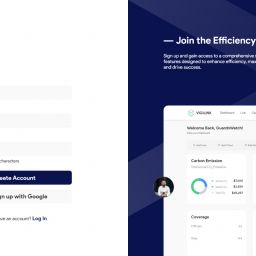What is Employee Management & How to Manage Employees Effectively
Employee management is a crucial aspect of running a successful organization. It involves overseeing and coordinating the activities of employees to ensure their productivity, engagement, and overall satisfaction. Effective employee management requires a combination of leadership skills, communication strategies, and the implementation of best practices. In this article, we will explore what employee management entails and provide tips on how to manage employees effectively.
What is Employee Management?
Employee management encompasses all activities related to the supervision, guidance, and development of employees within an organization. It involves tasks such as hiring and onboarding new employees, setting expectations, providing feedback and coaching, managing performance, resolving conflicts, promoting employee development, and fostering a positive work culture. The goal of employee management is to create an environment where employees can thrive, contribute their best work, and achieve organizational objectives.
Tips for Effective Employee Management:
1. Clear Communication:
Effective communication is the cornerstone of successful employee management. Clearly communicate expectations, goals, and objectives to employees, and ensure that they have a clear understanding of their roles and responsibilities. Encourage open and honest communication, actively listen to employee feedback, and provide regular updates and feedback on their performance.
2. Goal Setting:
Set clear, measurable, and attainable goals for employees. Collaboratively establish goals that align with the organization’s objectives and provide a sense of purpose and direction. Regularly review progress, provide feedback, and celebrate achievements. Goal setting helps employees stay focused and motivated while contributing to the overall success of the organization.
3. Performance Management:
Implement a performance management system that includes regular performance evaluations, feedback, and goal tracking. Provide constructive feedback that highlights strengths and areas for improvement. Develop performance improvement plans when necessary, and recognize and reward outstanding performance. Performance management helps employees grow, develop their skills, and stay accountable.
4. Employee Development:
Invest in the development of your employees by offering training, workshops, mentoring programs, and opportunities for growth. Encourage continuous learning and provide resources for employees to enhance their skills and knowledge. Support career progression and create development plans that align with their aspirations. Employee development shows that you value their growth and are invested in their long-term success.
5. Recognition and Rewards:
Recognize and appreciate employees for their contributions and achievements. Implement a recognition program that acknowledges their hard work and celebrates milestones. Provide rewards, incentives, and opportunities for advancement to motivate employees and foster a positive work environment. Recognized and appreciated employees are more engaged, satisfied, and likely to remain loyal to the organization.
6. Empowerment and Autonomy:
Empower employees by delegating responsibilities and giving them autonomy over their work. Trust them to make decisions and take ownership of their tasks. Encourage creativity, innovation, and problem-solving. Empowered employees feel valued, trusted, and motivated to excel in their roles.
7. Teamwork and Collaboration:
Foster a collaborative work environment where employees can work together effectively. Encourage teamwork, communication, and knowledge sharing. Establish channels for cross-departmental collaboration and provide opportunities for team-building activities. Collaboration promotes synergy, creativity, and a positive work culture.
8. Work-Life Balance:
Support employees in achieving a healthy work-life balance. Encourage time off, flexible work arrangements, and policies that promote well-being. Respect personal boundaries and ensure that employees have time to recharge and attend to their personal responsibilities. A healthy work-life balance contributes to increased productivity, engagement, and employee satisfaction.
9. Conflict Resolution:
Address conflicts and disputes promptly and fairly. Establish a process for conflict resolution and provide guidance and support to employees. Encourage open dialogue and mediate conflicts when necessary. Resolving conflicts effectively helps maintain a harmonious work environment and fosters positive relationships among employees.
10. Lead by Example:
As a manager, lead by example and set the tone for the organization. Demonstrate professionalism, integrity, and a strong work ethic. Show respect and treat employees fairly. Be accessible, approachable, and supportive. Your actions and behavior influence the culture and engagement of your employees.
Conclusion:
Effective employee management is vital for the success of any organization. By implementing these tips, you can create an environment where employees feel valued, engaged, and motivated to perform their best. Remember that employee management requires continuous effort, adaptability, and a genuine commitment to supporting and developing your employees.
















